Vegetables & Fruit – How to be a Ten a Day Warrior
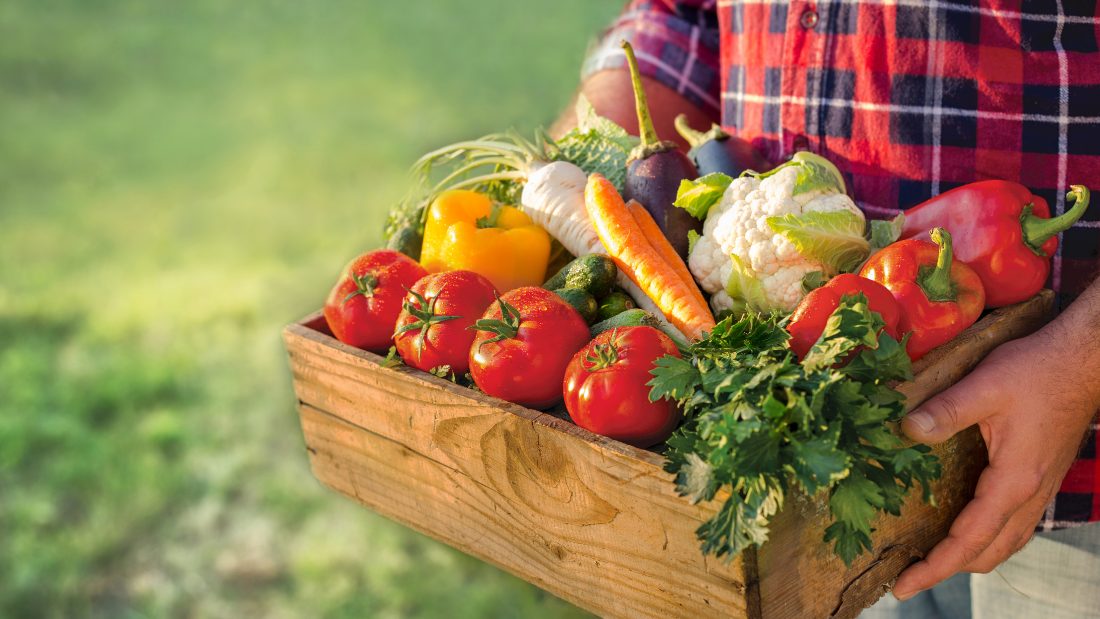
It’s official – vegetables and fruit are the backbone of a good diet
It’s not just five a day. In fact, experts now recommend at least 7-8 portions a day for greater benefit. Yet far too few of us manage even five, and even if we do, it often doesn’t include enough vegetables – relying instead on sugary fruit smoothies and concentrated fruit juice instead of a healthy ratio of veg:fruit.
Why are veg and fruit so important?
Because they’re packed with disease-busting antioxidants, vitamins and minerals and are an excellent source of fibre.
So why do so many people find it so difficult?
Because they often see veg and fruit as add-ons instead of the basis of a meal.
But no worries… read on for our top tips and tricks.
Basics
- Eat more vegetables than fruit – fruit is great but you need the greens too for a wide spread of important nutrients
- Eat whole fruit and not just bananas. Berries, apples, pears, melon and more… the fibre is important to balance out the high levels of fructose. Commercial or even freshly squeezed fruit juice acts like sugar in our bloodstream because it’s too concentrated in fructose and doesn’t contain enough fibre
- Pulses – beans, peas or lentils – only one portion counts towards your five a day. However, they are also a valuable source of protein and other nutrients as well as being low in fat so no need to stint!
- Potatoes (white) don’t count. That doesn’t mean you shouldn’t ever eat them, just don’t overdo it – and make sure you eat better quality root veg instead, eg sweet potatoes, swede, parsnip and turnip
How to be a Ten a Day Warrior – simple strategies
- Eat a rainbow plate – a variety of colours raw and cooked – orange, yellow, red, green, purple… for all those vital nutrients.
- Eat in season if possible.
- Eat organic – or part organic – if you can afford it. It’s better for you and the environment. See this article on the most and least unsprayed produce. Veg boxes offer a better deal on organics than supermarkets as a rule and there is more choice with boxes these days. But if the budget is tight be a Lidl/Aldi Warrior or the like – their veg and fruit is fantastic value.
- Frozen vegetables and fruit are a great standby, are full of nutrients and are useful if you’re on a budget. Tinned vegetables and fruit are not advised as a rule.
- Don’t overcook – treat them gently and keep a slight ‘bite’ so the vegetables have texture, taste as well as keeping their vitamins.
- Always add finely chopped veg to pasta sauces and curries – grate in carrots, add finely chopped peppers and the like.
- Blend them in soups.
- Hide them in curry, stew, stuffed pancakes, lasagne, bakes…
- Green Smoothies. This will set you up with a big proportion of your ten a day. But don’t forget, you also need whole vegetables!
- Breakfast. Add veggies to a cooked breakfast eg mushrooms, tomatoes, fried red onions, scrambled tofu with added tomatoes, spinach… and baked beans!
- Snacks. Try eating more vegetables eg carrots dipped in nut or seed butter; raw veggies dipped in hummus or another bean dip. If you’re on the move, supermarket bags of prepared carrot sticks and mini hummus pots are handy.
- Salad. Serve it with everything where possible. Salads can pack in several servings of veg, especially if you add pulses such as puy lentils, chickpeas, haricot or black bean. Avocado, alfalfa sprouts, grated carrots, raw asparagus, artichoke hearts, sundried tomatoes, olives and the like make salads sexy – as do nice dressings, seeds and nuts!
- Choose sweet potatoes and other starchy veg like squash in place of white potatoes at dinner.
- Red onions add more nutrients than white. Try frying up caramelised red onion in batches. Store in the fridge and add to all sorts of meals
- Add lots of veg to vegan quiches and pizzas – onions, mushrooms, peppers, rocket, spinach always work well.
- Organise veg and fruit with each meal or snack. A good way to think of it is to aim for 3 servings of veg with lunch and dinner; that way you already have 6 servings and will be likely to get in at least 3-4 more servings easily.
- Sandwiches and wraps: add a handful of spinach, chopped tomatoes, grated carrot, alfalfa sprouts or cucumber to your bean pate, sliced falafel, vegan cheese, veggie burger, cheatin’ slices etc…
- Experiment with using vegetables as alternatives to carbs, for example lettuce leaves in place of wraps and courgette spirals in place of pasta. (But make sure you get enough quality carbs so you feel satsified, eg quinoa, brown rice, wholemeal bread).

What a typical day might look like
Those with more active lives, eg gardeners, builders etc can easily add more nutrient-dense snacks and extra portions, eg nuts, avocados, hemp powder (smoothies etc).
- Breakfast – green smoothie with spinach, kale, blackcurrants, carrot and a banana blended with almond milk (4-5 servings)
But if that feels like a step too far, eat good quality muesli, unsweetened, with a pile of added fruits that you enjoy, eg blueberries, blackcurrants, raspberries, kiwi, banana…
Psst. Did you know that
- blackcurrants – native to the UK – are even higher in disease-busting antioxidants than blueberries?
- most berries are cheaper when bought frozen but are often higher in nutrients?

- Lunch – a Super Salad with avocado, haricot beans, lettuce, alfalfa sprouts, tomato, red pepper and cucumber or similar (4-5 servings). Add a handful or two of quality carbs such as cooked quinoa, brown rice, couscous or a slice of wholemeal bread if necessary
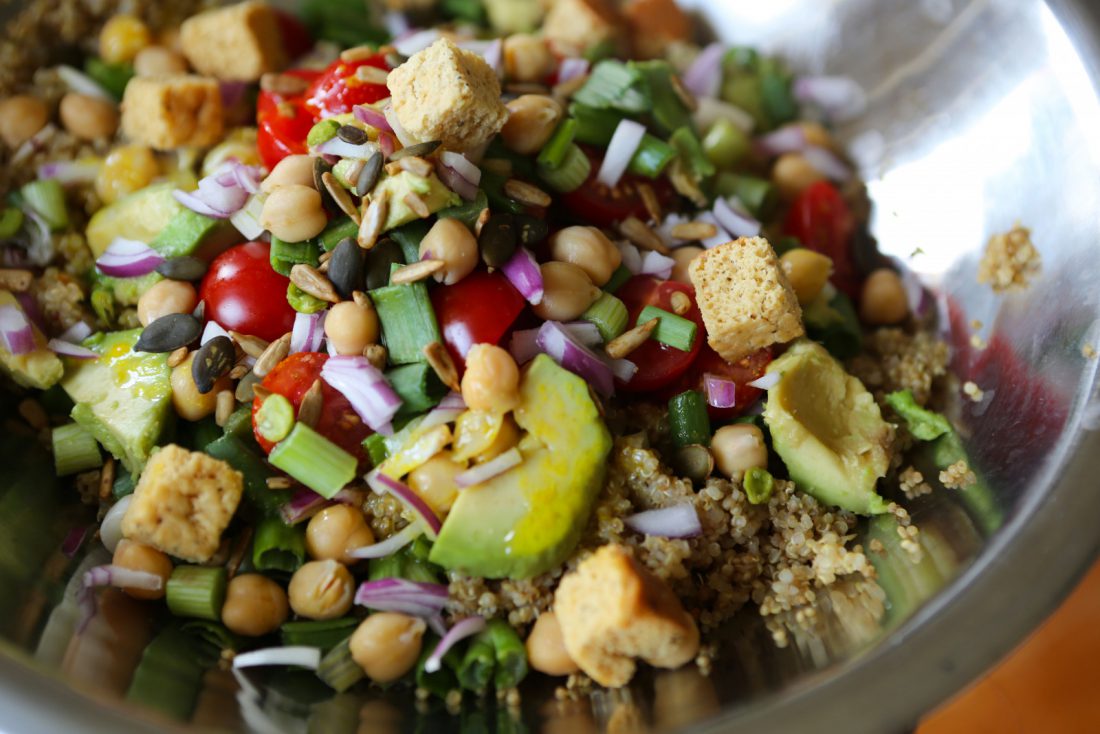
- Snack – carrot sticks with cashew or almond butter or hummus for dipping (1 serving)
- Dinner – Smoked tofu or marinated tofu pieces with stir fried courgette, cabbage, mushrooms, coconut milk and brown rice or wholemeal noodles (3 servings)
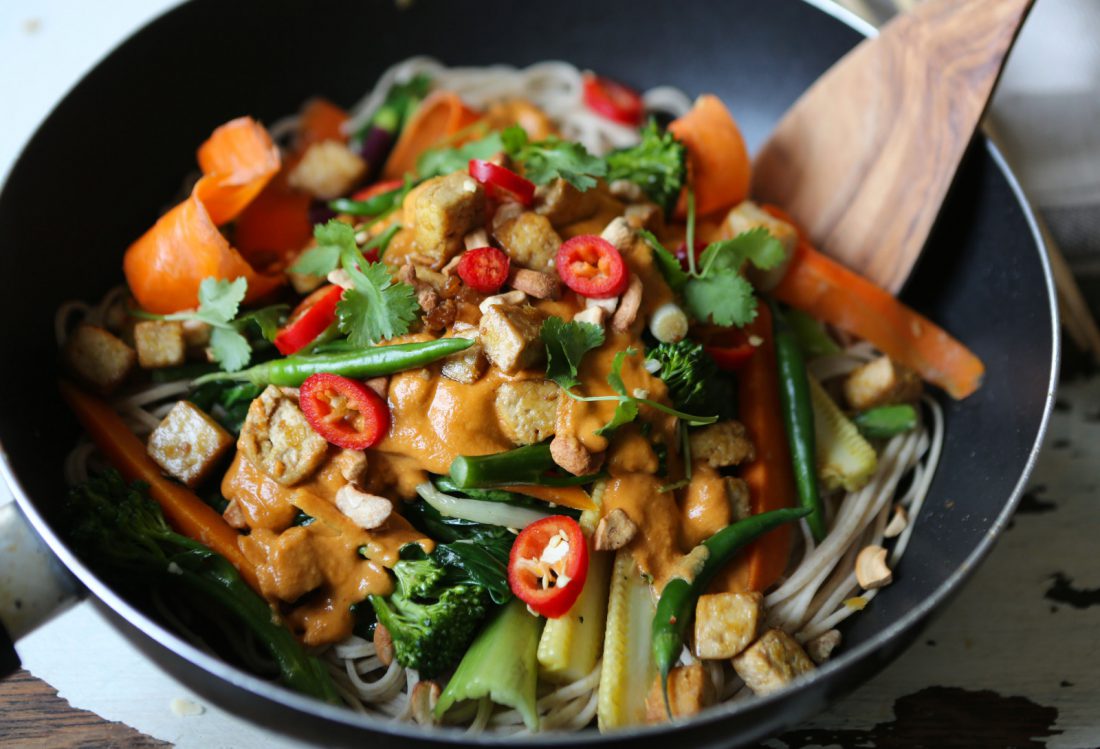
- Dessert – fresh fruit and vegan yoghurt (1 serving)
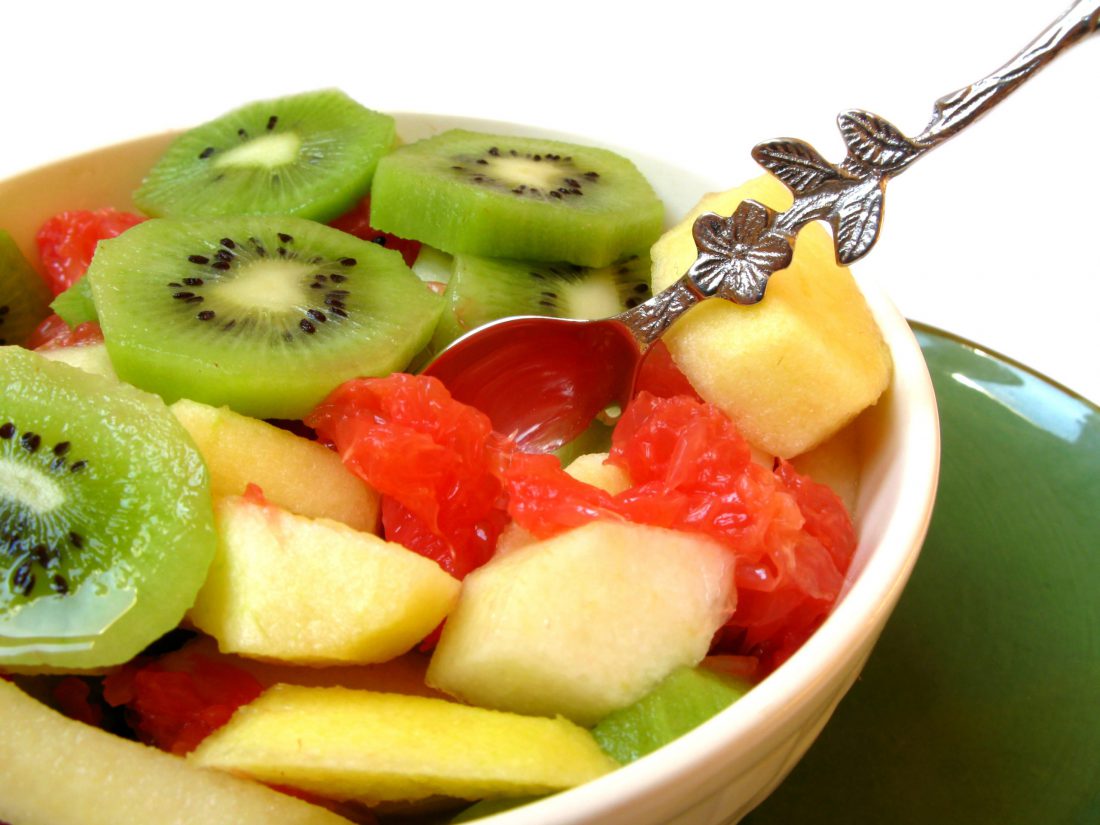
Changing habits
The psychological bit!
Food is often tied up with our emotional past because it’s one of the first areas where young children start to rebel and establish their personalities. It can become a painful battleground between frustrated parents and kids – such associations may well make adults shun vegetables rather than just because of the taste. But the good news is…
Tastebuds renew regularly
So what tasted gross when you were little may well change with adult tastes. Keep trying new foods or cooking them in different ways.
Junk food blunts your tastebuds and makes real food taste odd
Sugar, too much salt, animal fat, additives, highly processed carbs and other foods are highly addictive and the body gets to crave their drug-like ‘highs’. Wean yourself off them slowly but gradually – reclaim the tastebuds!
Don’t give up on the kids
It’s been suggested that it can take up to at least 12-20 exposures to each new food before young children will eat them. Gentle persistence and also getting kids involved in the preparation and cooking all help. Good habits can last a lifetime.
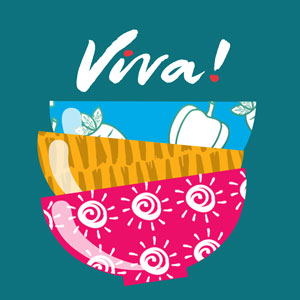
The author
This post was written by VRC Team
Vegan Recipe Club is part of the UK’s leading vegan charity, Viva!. We have hundreds of delicious vegan recipes; from easy weeknight dinners to showstopper desserts, and everything in-between! Keep your eyes peeled for new recipes each month developed by our expert team of foodies and from guest chefs too.
